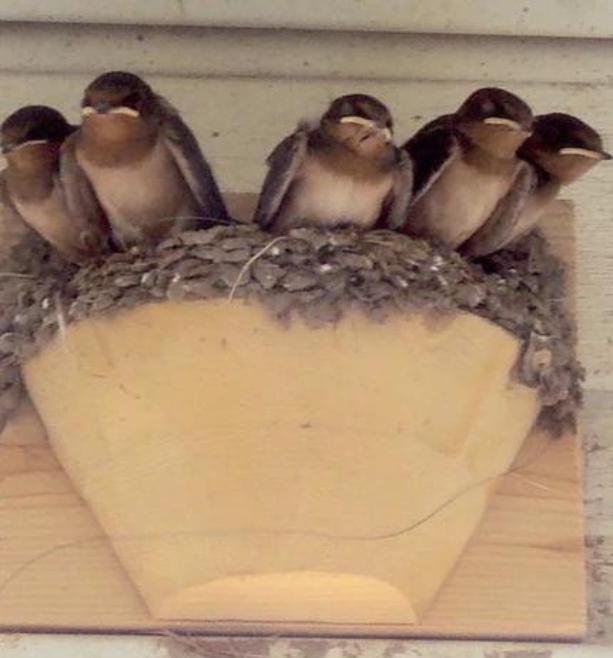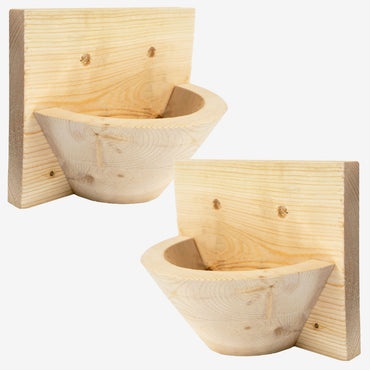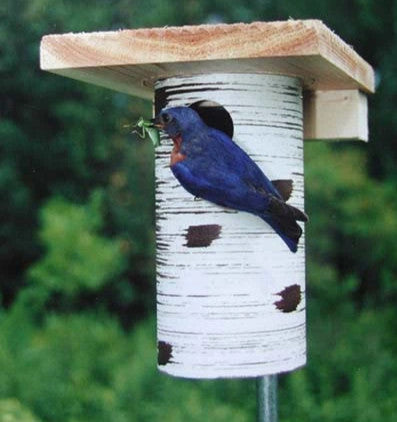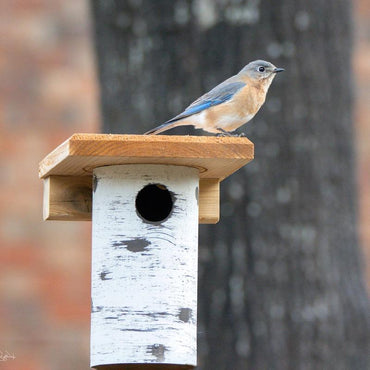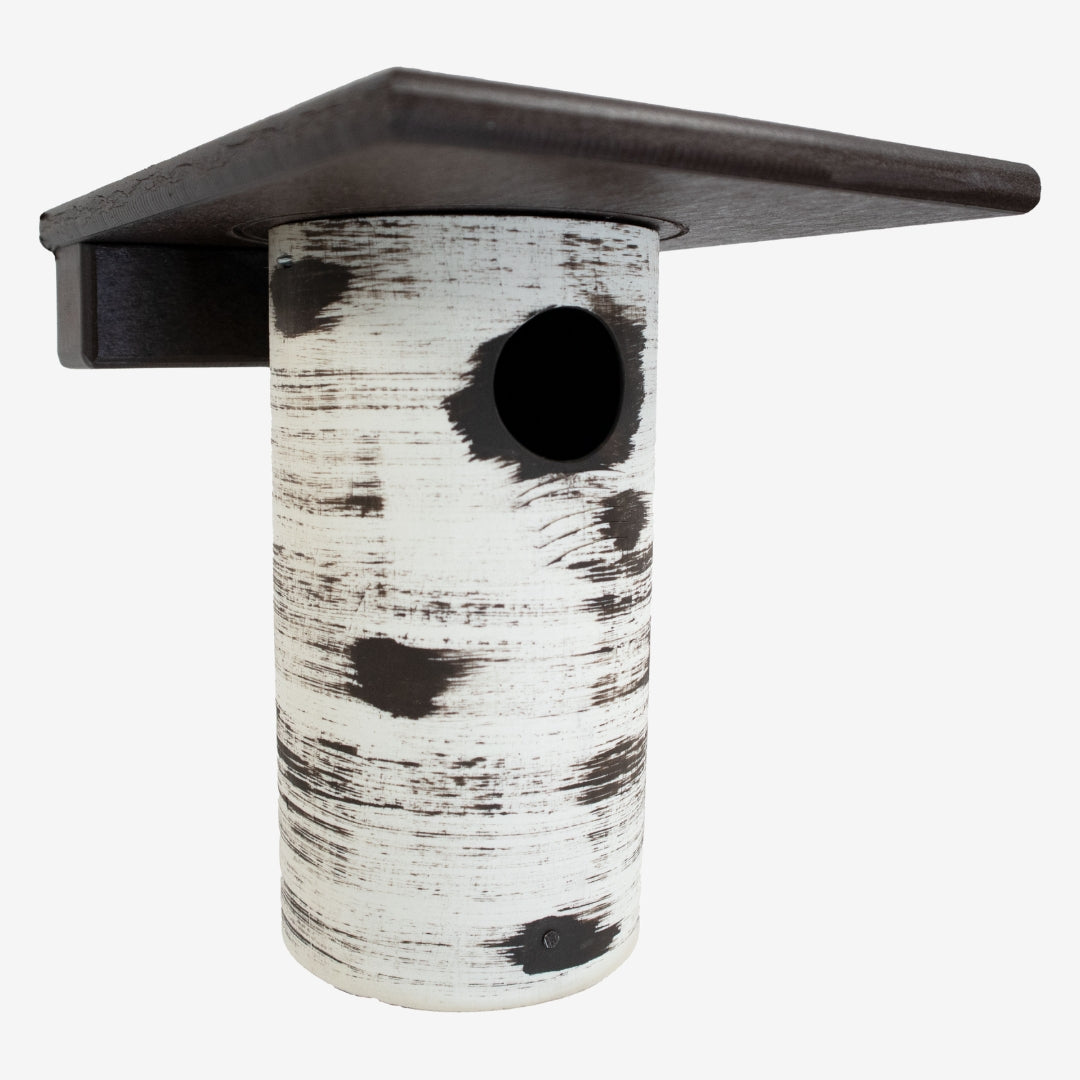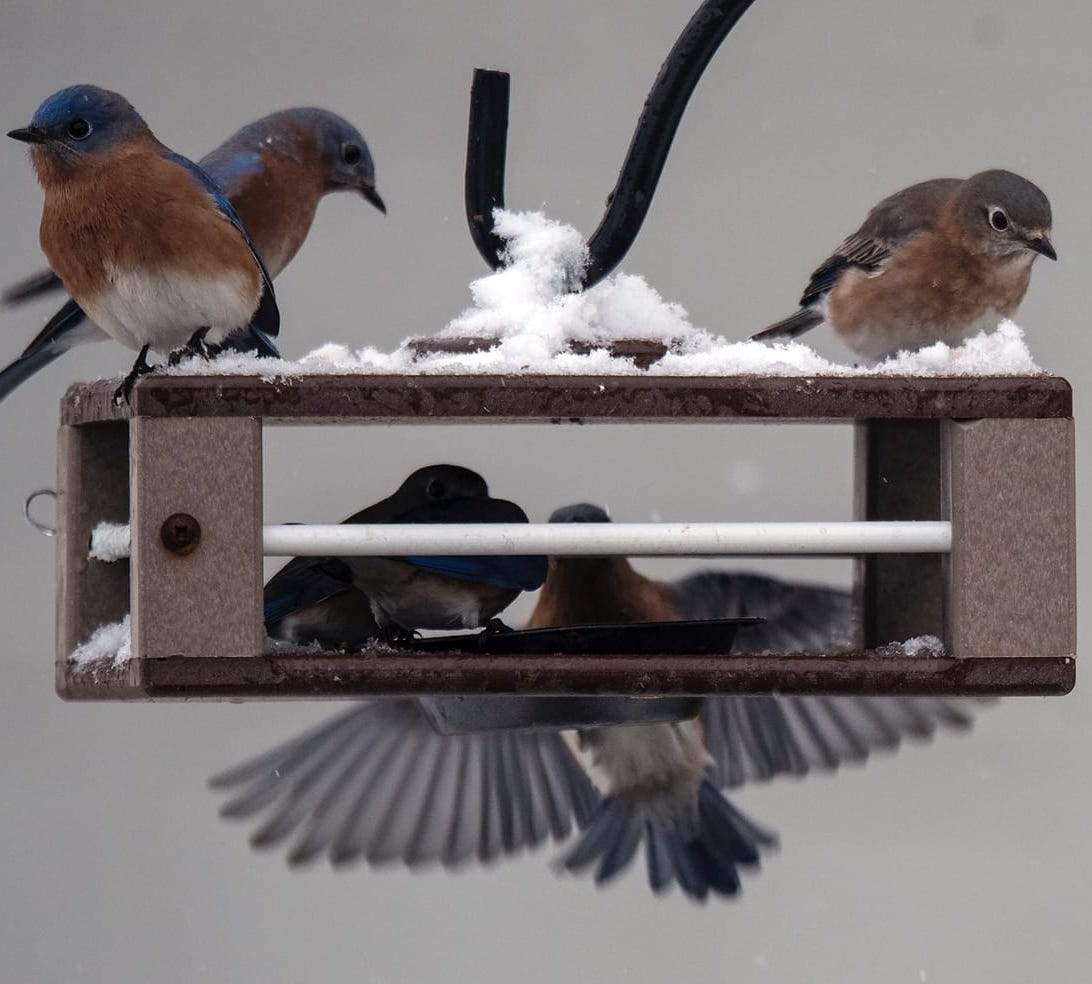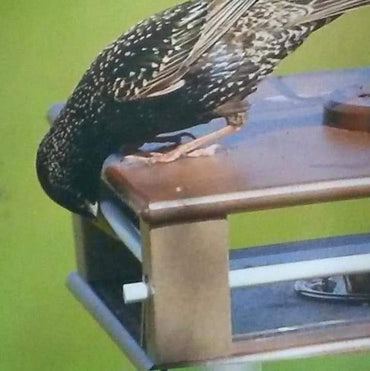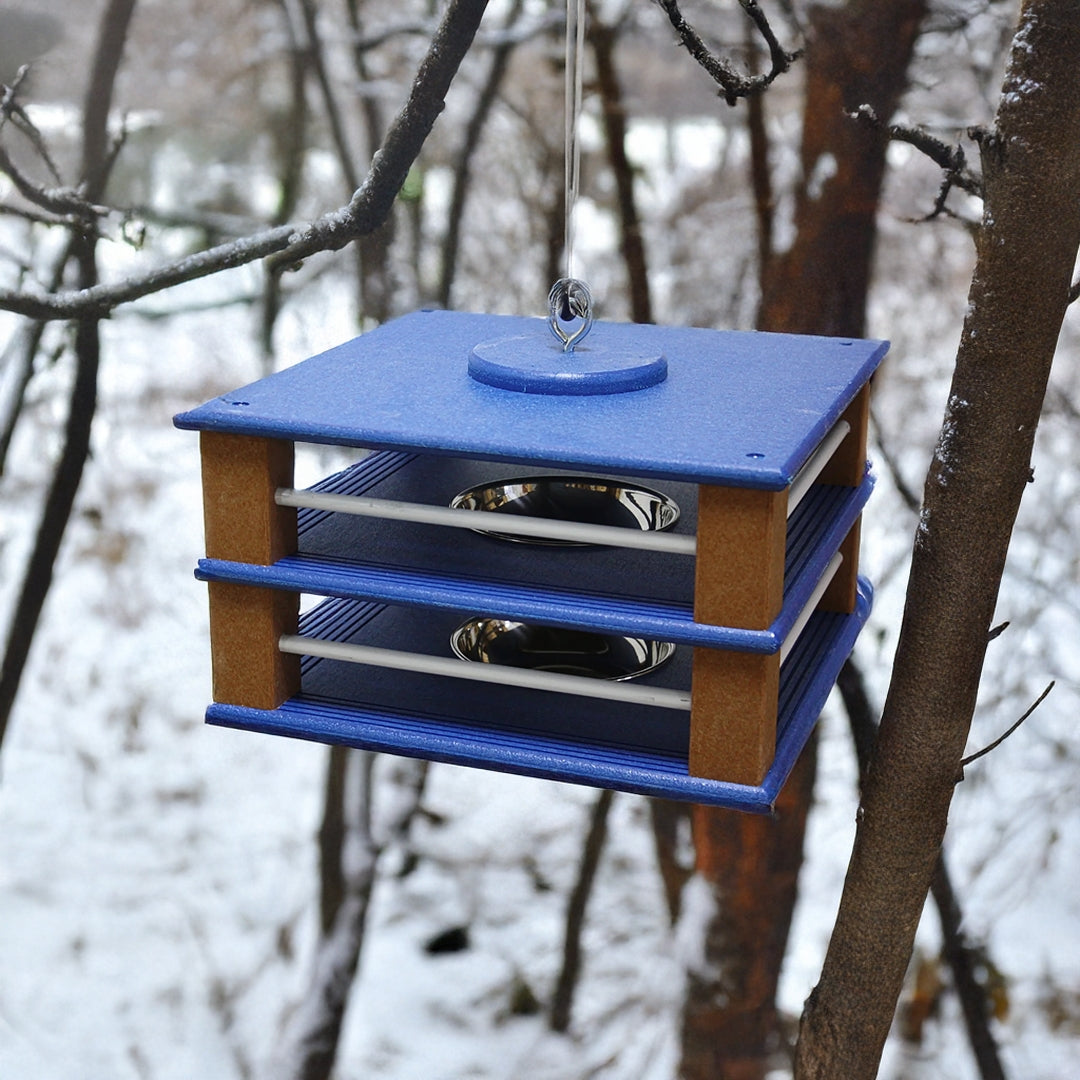Simply use one cup of pure white cane (table) sugar to four cups of water.... nothing else! NO RED DYE PLEASE!
 Homemade Sugar Water Solution
Homemade Sugar Water Solution
It's not even necessary to boil the water, but using one cup of boiling water will dissolve sugar quicker and effectively. Add three cups of cold water, stir well, and nectar is ready for feeders - sans the cooling time.
Store unused portion in the fridge up to 2-3 weeks max. In extreme heat, be sure to change feeders often (every 2-3 days). Never use honey or syrup as it ferments causing hummingbirds harm.
Do not use artificial sweeteners (chemicals) or red dye as hummingbirds' kidneys can not process these. It's been found they're probably fatal to the sprites.
The homemade sugar water solution actually seems to be more popular than commercial nectar mixes with many of the tiny sprites, and with just two ingredients (sugar and water)... it couldn't be any easier!
You can even forget the measuring cup, spoon and storage container with the new Nectar Aid. It's a self-measuring pitcher designed just for mixing nectar.
Help Attract Small Insects to Your Yard
Hummingbirds also eat small insects, and to help attract them to your yard, you can simply hang an overripe banana peel or cantaloupe rind near the feeder; a mesh produce sack works well for this.
Please use all pesticides wisely and only when absolutely necessary (better yet, don't use them at all) because other avian friends and wildlife in general, depend on small insects as part of their diets. Butterflies, hummingbirds and bees draw nectar from both wild native and planted flowers, so it's really best practice to quit using pesticides all together.
Plants to Attract and Feed Hummingbirds
Trees & Shrubs
- Azalea
- Butterfly Bush (Buddleia)
- Cape Honeysuckle
- Flame Acanthus
- Flowering Quince
- Lantana
- Manzanita
- Mimosa
- Red Buckeye
- Tree Tobacco
- Turk's Cap
- Weigela
Vines
- Coral Honeysuckle
- Cypress Vine
- Morning Glory
- Scarlet Runner Bean
- Trumpet Creeper
Perennials
Some may be annuals or perennials depending on climate.
- Bee Balm (Monarda)
- Canna
- Cardinal Flower
- Columbine
- Coral Bells
- Four O'Clocks
- Foxglove
- Hosta
- Hummingbird Mint (Agastache)
- Little Cigar
- Lupine
- Penstemon
- Yucca
Annuals
- Beard Tongue (and other penstemons)
- Firespike
- Fuchsia
- Impatiens
- Jacobiana
- Jewelweed
- Petunia
- Various Salvia species
- Shrimp Plant


